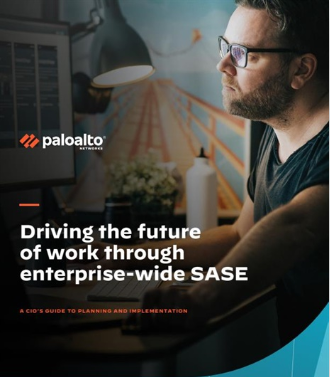The CIO’s Guide to SASE Planning
Driving the future of work through enterprise-wide SASE
The convergence of networking and network security as a single cloud service, secure access service edge (SASE), represents an opportunity to free organizations from the limitations of legacy hardware-based, data center-centric architectures. By removing the barriers to digital transformation, SASE increases the rate at which organizations can empower their hybrid workforces. SASE allows you to move on cloud initiatives and transform branch offices, preparing you to respond to rapid change.
Read the e-book, “Driving the future of work through enterprise-wide SASE,” and gain knowledge and insights to help you successfully navigate your organization through the transition to SASE. Insights include:
Whether you're a veteran CIO or an aspiring IT leader, if you're interested in gaining a strategic perspective of how your organization can benefit from SASE and what it takes to get there, this guide is for you.
Read More
By submitting this form you agree to Palo Alto Networks contacting you with marketing-related emails or by telephone. You may unsubscribe at any time. Palo Alto Networks web sites and communications are subject to their Privacy Notice.
By requesting this resource you agree to our terms of use. All data is protected by our Privacy Notice. If you have any further questions please email dataprotection@techpublishhub.com
Related Categories: Data Security, Firewall, Network Security


More resources from Palo Alto Networks

6 Lessons from SASE Innovators
How Leading Organizations Are Getting Ahead with Prisma SASE
Enterprises have traditionally taken a hardware-based approach to connect their ...

The 10 Tenets of an Effective SASE Solution
As cloud adoption grows, cloud-enabled organizations are experiencing an influx of new security requirements. On top of these demands, they still n...

The CIO’s Guide to SASE Planning
Driving the future of work through enterprise-wide SASE
The convergence of networking and network security as a single cloud service, secure ...

